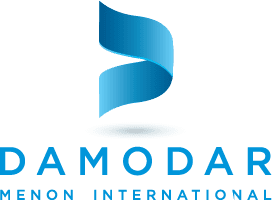Textile companies in India manufacture non-woven fabrics through the process of felting or bonding fibers together. This is different from traditional woven fabrics, which are created by interloping and interlacing yarns. Non-woven fabrics are produced through thermal, chemical, and mechanical processes without the need to convert fibers into yarn.
Overview
Non-woven textile materials are made by randomly throwing fibers into trays without any specific order or direction and then bonding them using heat, pressure, and chemical and mechanical processes. The end result is a mat, sheet, or textile web.
Non-woven fabrics are mainly made from polymers. They are less expensive than woven fabrics, durable and strong.
However, these fabrics can also be made from natural and synthetic fibers, such as cotton, viscose, wool, polyester, polypropylene, and nylon, and even combined to create fabrics with different properties, textures, and characteristics.
Non-woven fabrics can be one-layered or several-layered, such as SMS fabrics.
If you are looking for non-woven cotton buyers for your business, contact our trading experts to connect with verified buyers and sellers across the globe.
Properties of Non-Woven Fabrics
Due to its versatile properties, textile companies in India manufacture nonwoven fabrics for various industrial and commercial applications. Some of the key characteristics that these fabrics exhibit without engineering are:
- Extreme Flexibility: Non-woven fabrics can be easily modified into unique shapes and forms, making them suitable for industry applications requiring flexibility and conformity.
- High Porosity: The high number of pores provides a greater surface area for interactions with other components, allowing fluids, gases, and other substances to pass through easily.
- Great Strength. Depending upon the manufacturing process, you can expect high tensile, burst, and tear strength from non-woven fabrics.
- Enhanced Absorbency: A few variations of non-woven fabrics can quickly absorb and hold liquids, making them a perfect material for medical, health, and hygiene products.
Barrier Properties
Non-woven fabrics can undergo treatments involving various materials, chemicals, and compounds to enhance their effectiveness. These treatments can result in textiles with barrier properties, including resistance to water, oil, and heat, as well as antimicrobial and chemical resistance. Such enhancements broaden their utility across diverse industries.
Properties that non-woven fabrics exhibit after engineering are:
- Ultra Soft: Non-woven fabrics can be processed to make ultra-soft, comfortable, and gentle.
- Affordable: These fabrics are much cheaper to produce compared to processing knitted and woven fabrics for industry applications.
- Breathable: Certain fabrics allow air, moisture, and vapor to pass while effectively blocking the liquids.
Where Do Textile Companies in India Apply Non-Woven Fabrics
Due to their cost-effectiveness, versatility, durability, and ability to withstand change, non-woven fabrics have various industry and consumer applications, including the following:
Personal Care and Hygiene
Due to their fast absorbency, liquid repellence, and softness, these fabrics are popularly used for manufacturing various personal care and menstrual and feminine hygiene products, such as sanitary napkins, wet wipes, and diapers.
Healthcare
Since they have excellent barrier properties, non-woven fabrics are used for manufacturing facial wipes, baby wipes, medical and surgical dressings, disposable diapers, surgical gowns, face masks, gloves, and fabrics that filter microorganisms.
Agriculture
These fabrics find utility in shielding crops from adverse weather conditions, UV radiation, and pests. Due to their protective capabilities, they are commonly used in producing seedling covers, crop protectors, and greenhouse shades.
Construction
Non-woven fabrics are extensively used for developing geotextiles, insulation, and roofing materials as they can effectively resist water, withstand fluctuating temperatures, exhibit thermal properties, and fight mold and mildew.
Industrial
Because of their lightweight nature, thermal properties, resistance to heat and chemicals, and excellent absorbency, non-woven fabrics are commonly used in the packaging industry to create bags, backpacks, pouches, and wrappers. Additionally, they find use in the automotive sector for manufacturing car interiors and trunk liners. Furthermore, the chemical industry utilizes them for protective clothing, wiping cloths, and mopping materials.
If you want to buy synthetic or cotton fabric online in India, register your profile on TEXchange Global – the world’s first and fastest textile trading platform for B2B businesses. Verified non-woven fabric buyers and sellers worldwide are registered to conduct business transparently and effectively. You can buy, sell, import, and export to more than 80+ countries from any mobile device.
Advantages and Disadvantages of Non-Woven Fabrics
Non-woven textiles have advantages and disadvantages, just like knitted and woven fabrics. So, consider the pros and cons while selecting them for specific reasons.
Advantages:
- Relatively affordable compared to woven and knitted fabrics
- Highly resistant to wear and tear, temperature fluctuations, and harshest weather conditions
- Processing and enhancing fabrics for industrial applications is easy and cheap
- Any synthetic, natural, and recycled fiber can be converted into non-woven fabrics
- Extremely lightweight, making it an essential resource for the aerospace and automotive industry
- Can be produced using simple, energy-efficient, and cost-effective methods like spun bonding, melt blowing, needle punching
- Environmentally friendly and sustainable as they can be made from recyclable materials. Some of the variants are biodegradable, too
Disadvantages:
- Not suitable for heavy-duty applications as it possesses less strength compared to knitted or woven fabrics
- Can be stiff to wear and lacks draping abilities; it is not recommended for all apparel applications
- It is challenging to manipulate the fabric into intricate designs and patterns in garment and apparel design compared to woven and knitted fabrics
- Not all non-woven fabrics are breathable or biodegradable, which can increase pollution
The rise of technology and innovative production methods has led to the growing popularity of nonwoven fabrics, which are eco-friendly and sustainable for a variety of uses. DMI is a proactive resource for businesses looking to sell both woven and non-woven textile materials to various industries. Synthetic and cotton yarn manufacturers in India can also find great deals through DMI. Contact us to learn more.

